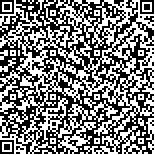本文已被:浏览 24次 下载 18次
Received:March 29, 2024 Published Online:April 20, 2025
Received:March 29, 2024 Published Online:April 20, 2025
中文摘要: 目的 从藏象辨证体系视角探讨新型冠状病毒(新冠病毒)初次感染和再感染的证候特点,为其中医辨治提供临床数据支持。方法 选择2023年6月1日至8月31日南京市中医院感染科新冠病毒咽拭子核酸检测为阳性的患者共141例为研究对象,其中新冠病毒初次感染40例(28.4%),再感染101例(71.6%)。运用频数统计、聚类分析、因子分析等统计分析和数据挖掘方法,探讨新冠病毒初次感染和再感染的证候特点。结果 初次感染年龄[35.50(26.25, 62.75)岁]与再感染者[35.50(26.25, 62.75)岁],差异无统计学意义(Z=0.686, P=0.492)。初次感染者体温[38.50(38.00,39.20)℃]高于再感染者[37.40(38.00,38.50)℃],差异有统计学意义(Z=3.619,P<0.01)。频数统计、聚类分析、因子分析等结果显示,新冠病毒初次感染病位主要在肺,可涉及心、脾、胃,少有肝、肾;病性多以热、湿为主,可涉及寒、气滞、气虚、阴虚、阳虚等。再感染患者病位在肺,涉及上中下三焦之心、脾、胃、肝、胆、肾等脏;病性以湿、热、寒、气虚、气滞、阴虚等为主。结论 新冠病毒初次感染和再次感染都以肺为主要病变部位,初次感染患者症状较为集中,而再感染患者体现了多病位、多病性的复杂特点,总体症状较轻。
Abstract:Objective To explore the characteristics of symptoms and signs in patients with initial and recurrent COVID-19 infections from the perspective of the Zang-Xiang syndrome differentiation system, providing clinical data support for Chinese Medicine treatment of COVID-19 infection. Methods A total of 141 patients who tested positive for COVID-19 nucleic acid by throat swab at the Infectious Disease Department of Nanjing Hospital of Chinese Medicine from June 1 to August 31, 2023, were selected as the research subjects, including 40 cases (28.4%) of initial infection and 101 cases (71.6%) of recurrent infection. Statistical analysis and data mining methods such as frequency statistics, cluster analysis, and factor analysis were used to investigate the characteristics of symptoms and signs in initial and recurrent COVID-19 infections. Results The age of initial infection [35.50 (26.25, 62.75) years] was not statistically different from that of recurrent infection [35.50 (26.25, 62.75) years] (Z=0.686, P=0.492). The body temperature of initial infection [38.50 (38.00, 39.20)℃] was higher than that of recurrent infection [38.00 (37.40, 38.50)℃], with a significant difference (Z=3.619, P<0.01). Results of frequency statistics, cluster analysis, and factor analysis showed that the primary location of disease in initial COVID-19 infection was in the lungs, which can also involve the heart, spleen and stomach, while rarely affecting the liver and kidney. The nature of the disease is predominantly heat and dampness, which can also involve cold, Qi stagnation, Qi deficiency, Yin deficiency, and Yang deficiency. Patients with recurrent COVID-19 infection had disease locations in the lungs, involving the upper, middle, and lower jiao organs such as the heart, spleen, stomach, liver, gallbladder, and kidney, with the nature of the disease being primarily dampness, heat, cold, Qi deficiency, Qi stagnation, and Yin deficiency. Conclusion Both initial and recurrent COVID-19 infections primarily affect the lungs. Patients with initial infection exhibit more concentrated symptoms, while those with recurrent infection demonstrate complex characteristics involving multiple disease locations and natures, with generally milder symptoms.
keywords: COVID-19 infection Data mining Zang-Xiang syndrome differentiation Disease location Disease nature
文章编号: 中图分类号:R254.3 文献标志码:A
基金项目:国家中医药管理局全国名老中医药专家传承工作室建设项目(国中医药人教函〔2022〕75号);江苏省社会科学基金(23LSD004);南京市中医院名老中医学术思想挖掘资助项目;南京中医药大学青年教师发展“双百计划”项目
引用文本:
